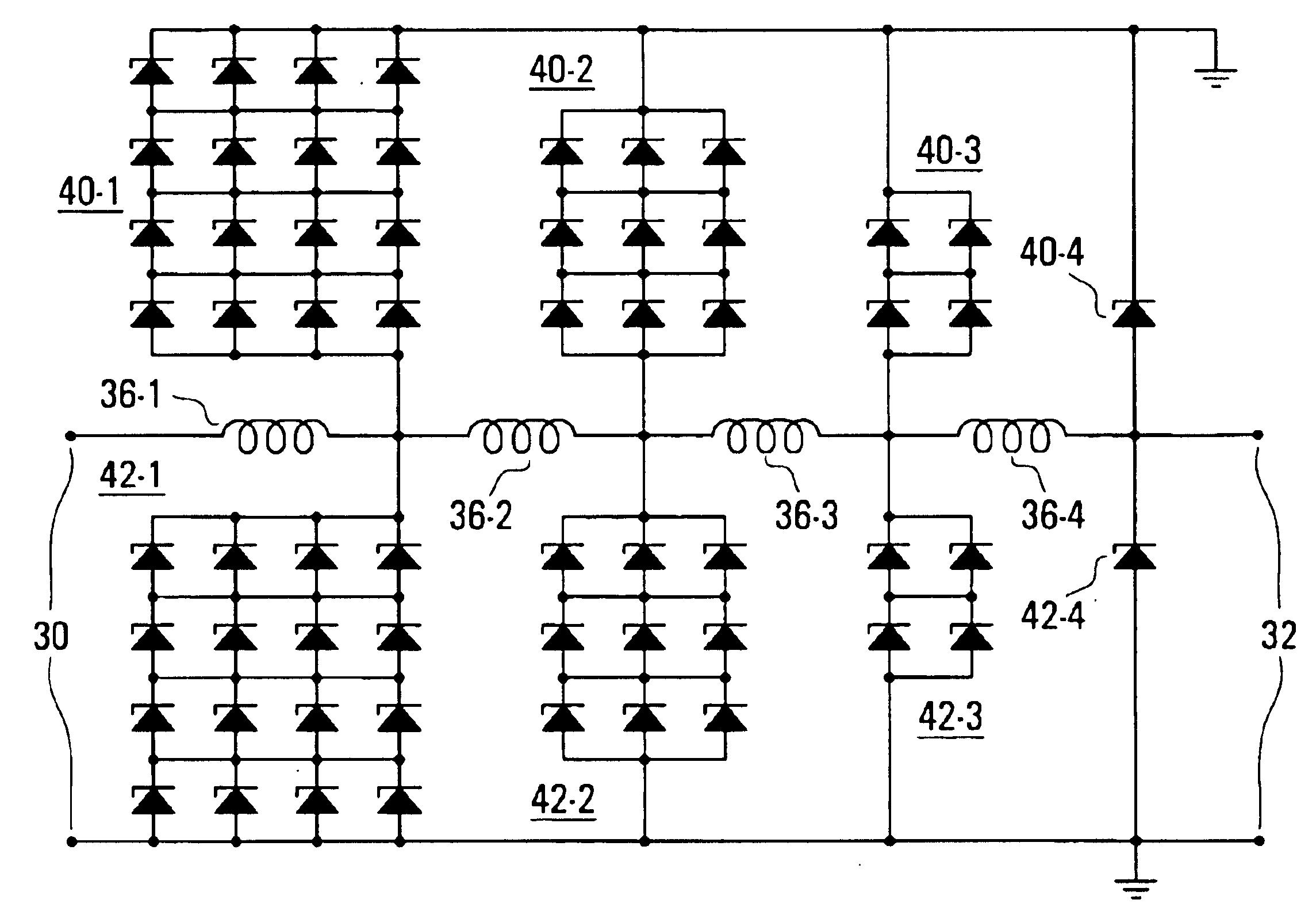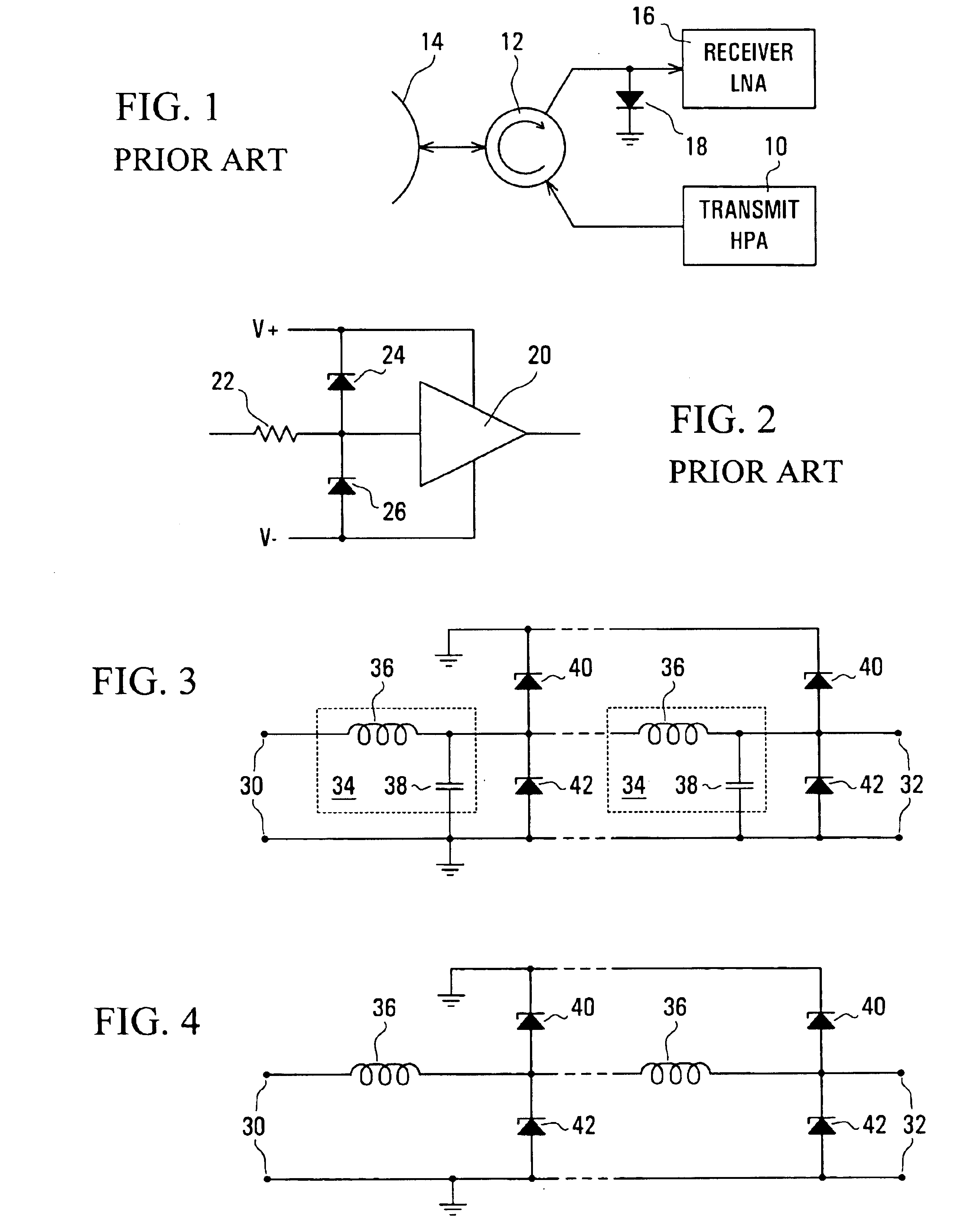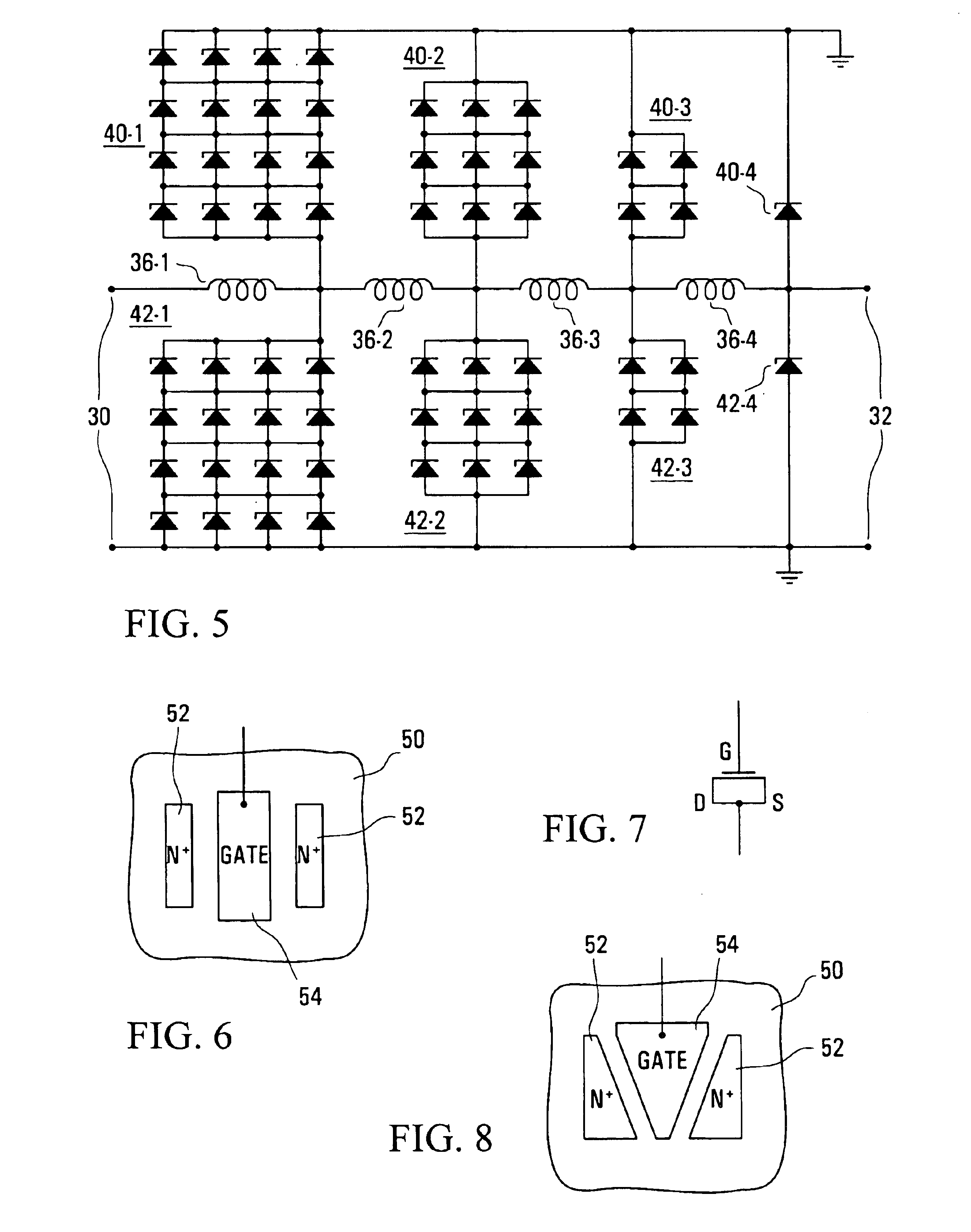Input power limiter for a microwave receiver
a technology for limiting power and microwave receivers, applied in the field of high frequency, can solve the problems of high cost and significant space, high resolution, and inapplicability of epitaxial silicon pin diodes
- Summary
- Abstract
- Description
- Claims
- Application Information
AI Technical Summary
Benefits of technology
Problems solved by technology
Method used
Image
Examples
Embodiment Construction
Referring to the drawings, FIG. 1 illustrates a microwave transmitter and receiver arrangement, for example for a radar system, in which an output of a transmit high power amplifier (HPA) 10 is coupled via a circulator 12 to an antenna 14. Signals received via the antenna 14 are coupled via the circulator 12 to an input of a receiver low noise amplifier (LNA) 16. In order to protect the LNA 16 from damage due to excessive power microwave signals and interference being supplied to its input, either by reflection by the antenna 14 of a signal from the HPA 10 or, especially, transmitted from some other transmitter, a microwave power limiter is connected at the input of the LNA 16.
As shown in the arrangement of FIG. 1, the microwave power limiter is constituted by a PIN diode 18 connected between the input of the LNA 16 and ground. As discussed above, such a microwave power limiter has the disadvantages of high cost, space requirements, and potential loss at its interface with the LNA 1...
PUM
 Login to View More
Login to View More Abstract
Description
Claims
Application Information
 Login to View More
Login to View More - R&D
- Intellectual Property
- Life Sciences
- Materials
- Tech Scout
- Unparalleled Data Quality
- Higher Quality Content
- 60% Fewer Hallucinations
Browse by: Latest US Patents, China's latest patents, Technical Efficacy Thesaurus, Application Domain, Technology Topic, Popular Technical Reports.
© 2025 PatSnap. All rights reserved.Legal|Privacy policy|Modern Slavery Act Transparency Statement|Sitemap|About US| Contact US: help@patsnap.com



